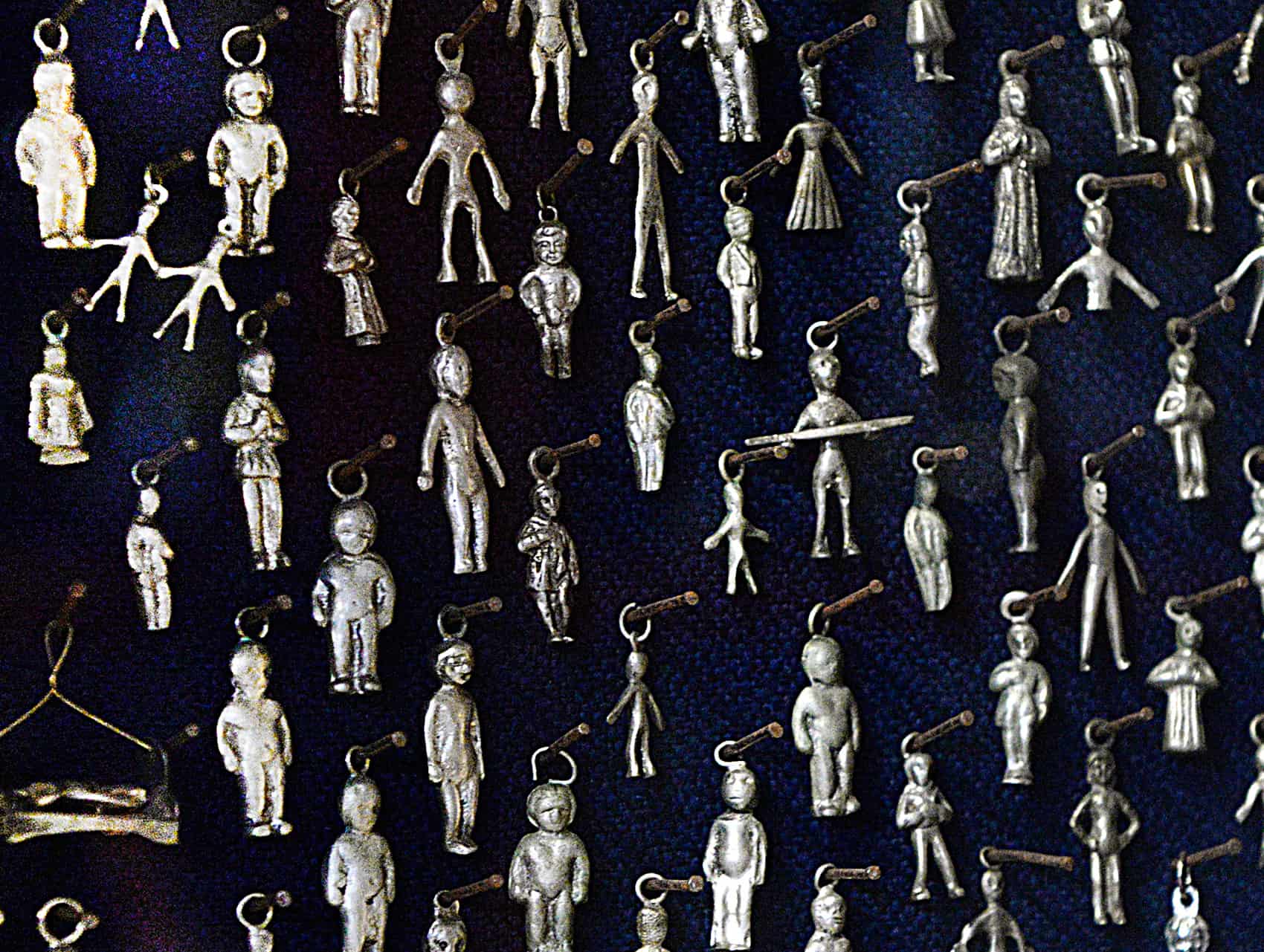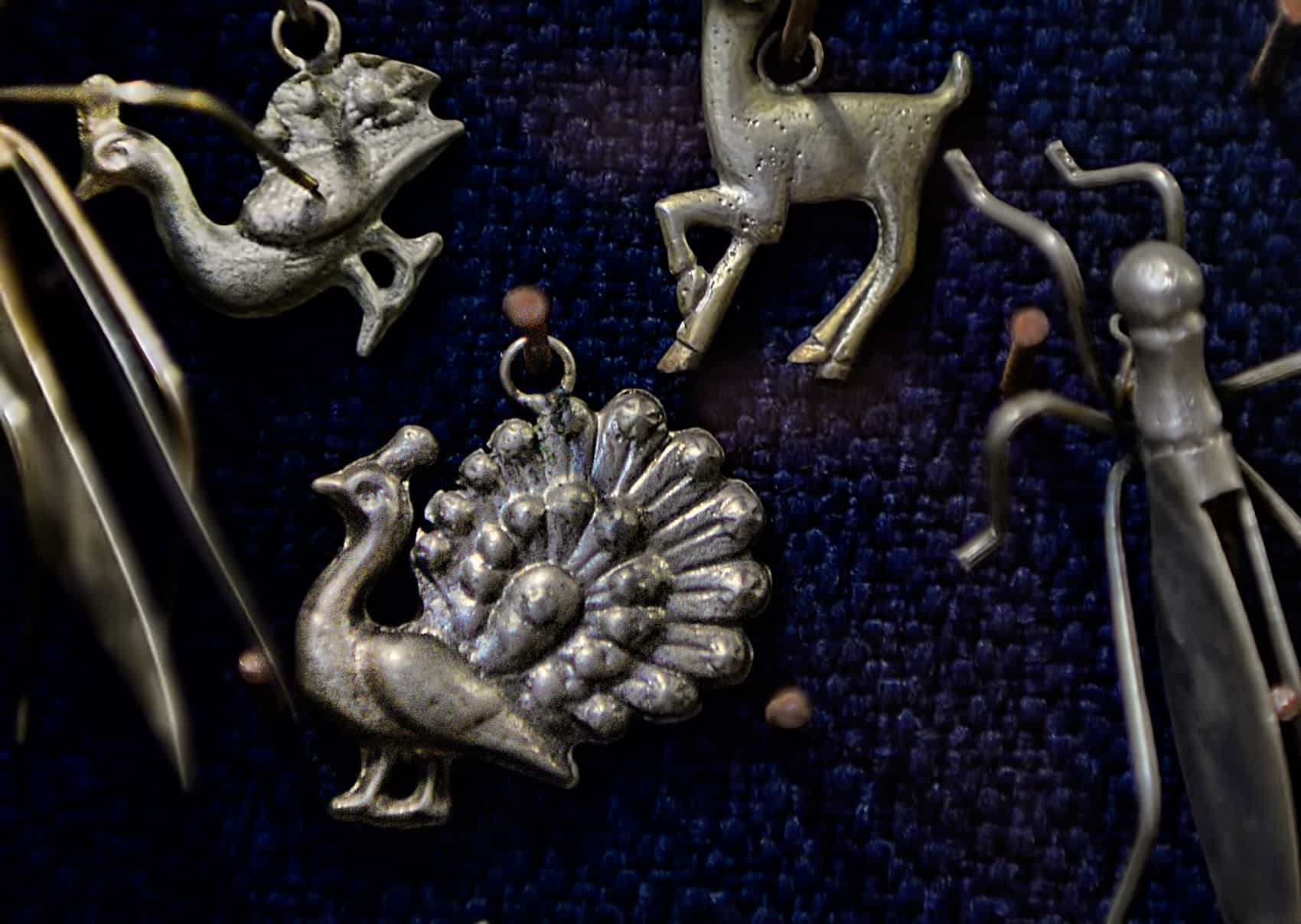On Friday and Saturday, thousands of Catholics will converge on the Basilica de Nuestra Señora de Los Ángeles in Cartago for Costa Rica’s annual pilgrimage, the romería. Many pilgrims have already begun their treks from the far corners of the country in order to make it to the church for Saturday’s mass in honor of the country’s patron saint, the Virgin of Los Ángeles.
According to the legend, on Aug. 2 sometime in the 17th century, an indigenous woman was gathering wood in the forest when she came across a small statue of a woman holding a baby in her arms. She took the statue home with her and put it on her shelf, but the next day the statue had disappeared. The woman returned to the forest and found the statue in the same spot as before. She took the idol home a second time, but it again returned to the same spot in the forest. After witnessing the phenomenon, a local priest declared that the statue was a message from the Virgin Mary that a church should be built in that spot; that church is now Cartago’s basilica.
The main attraction for any romero, or pilgrim, is La Negrita herself. Standing only 20 centimeters tall, the petite statue will be front and center in the church during the romería, surrounded by thousands of people clambering inside for a glimpse. But even those deterred by the idea of wrestling with sweaty pilgrims for a look at La Negrita can still leave an offering for the virgin in the Área de Exvotos in the church’s basement.
Like most patron saints, La Negrita is believed to possess healing powers. In order to tap into these abilities, pilgrims bring the statue tiny metal trinkets to represent whatever problem they want solved. The church has collected these offerings for almost 400 years and displays some of them in glass cases in a mini-museum.
The actual stockpile of offerings is much too large for the basilica’s meager basement. The overflow — especially the valuable gold overflow — is held in a vault at the Banco de Costa Rica. According to church officials, a large museum is in the works to show off the rest of the artifacts.
Many of the museum’s charms are obviously homemade, but for those not well-versed in the blacksmithing arts, the church’s religious artifacts store is right across the street. According to one of the store’s cashiers, Gabriel Cantillo, the store has been taking care of pilgrims’ metal-offering needs since 1982.
“We try to keep every type of offering anyone would want,” he said. “We carry everything from full bodies to cars to eyeballs.”
But if the offerings on display are any reflection, the needs of the pilgrims seem to go beyond the imaginations of the church store’s employees. The display cases house everything from the predictable — hearts and lungs — to the abstract — houses and flowers — to the downright eccentric — a peacock. Some carry notes, thanking La Negrita for her help, and others are inscribed with indecipherable symbols.
Though the church saves all of the offerings, the stories behind them are lost as soon as the pilgrim leaves the trinket behind, and while the tiny metal body organs carry obvious meaning, the significance of the more esoteric charms will forever remain a mystery.
“As for most of the offerings left behind, we can only wonder,” Cantillo said.
Here are some of our best guesses.
La Negrita, please fix…
My lungs
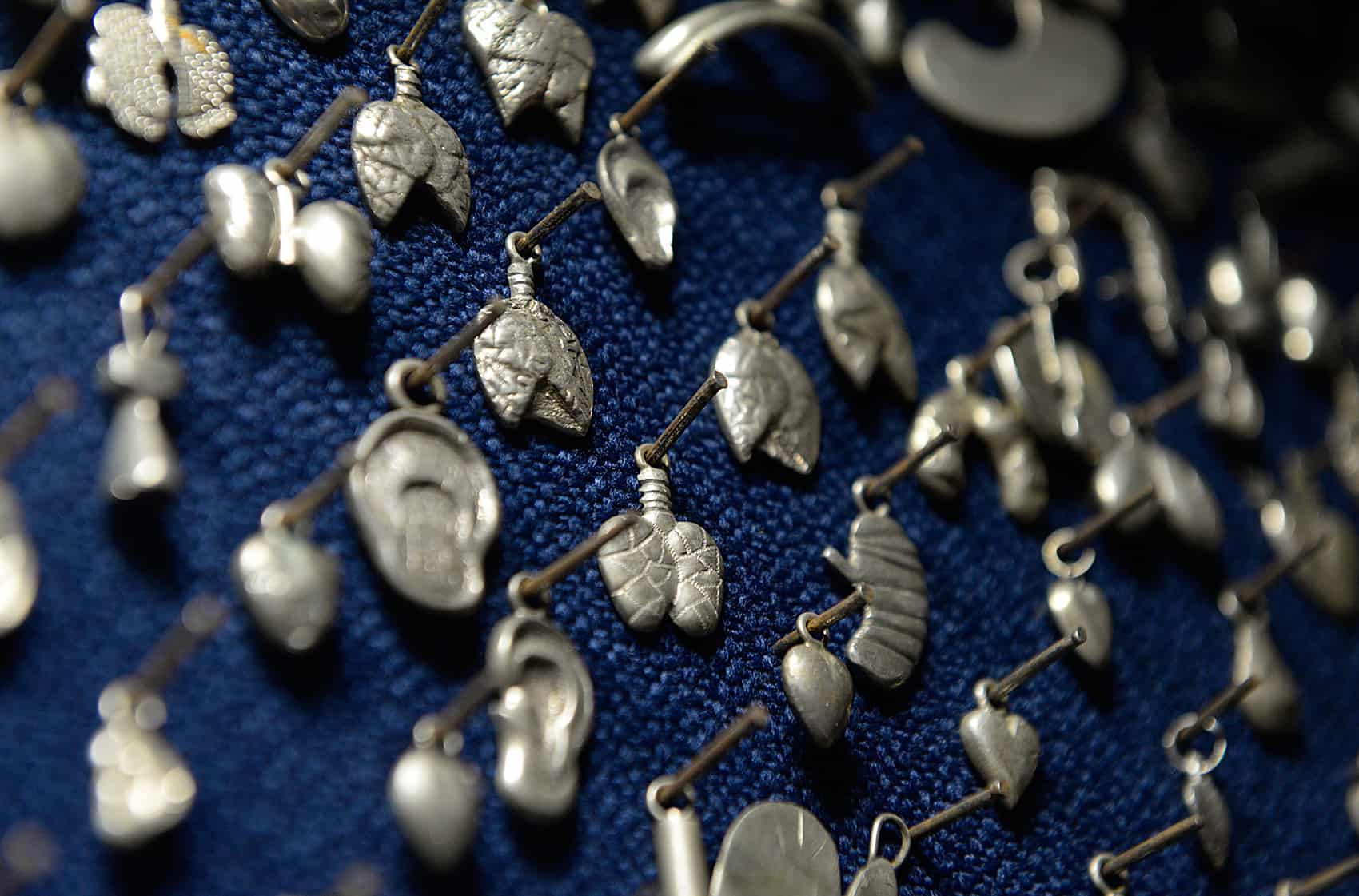
My arm
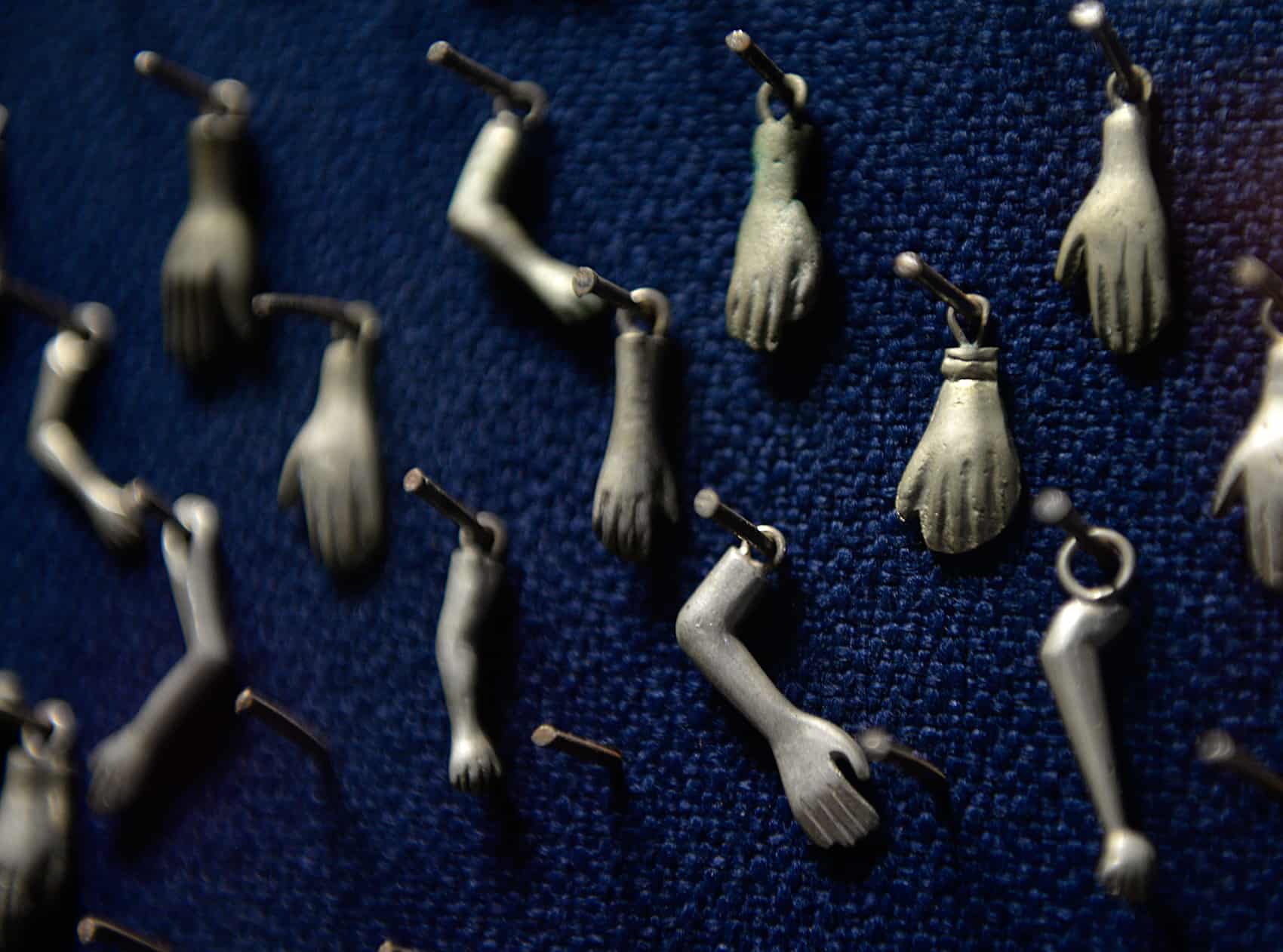
My severed middle finger
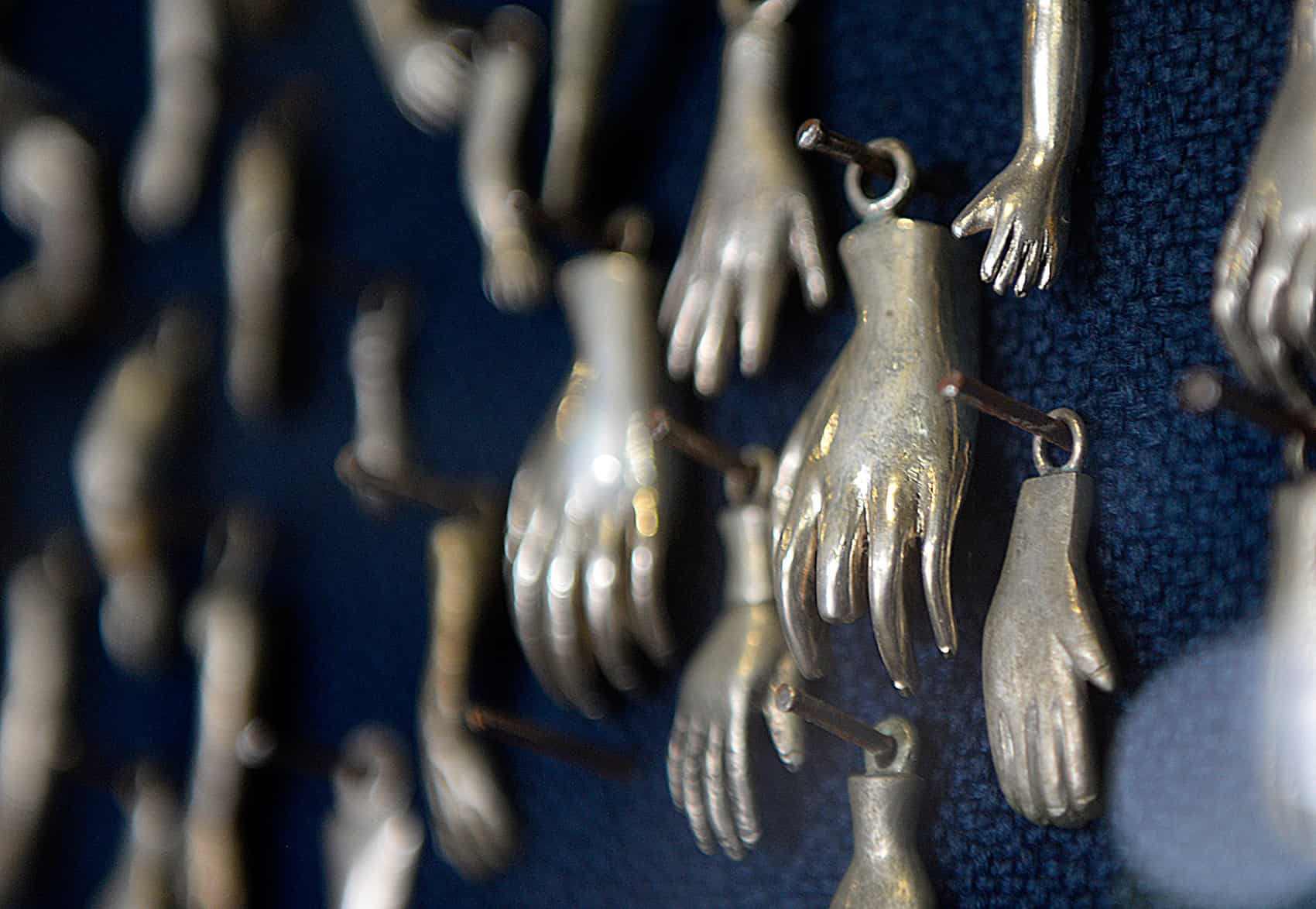
My cow
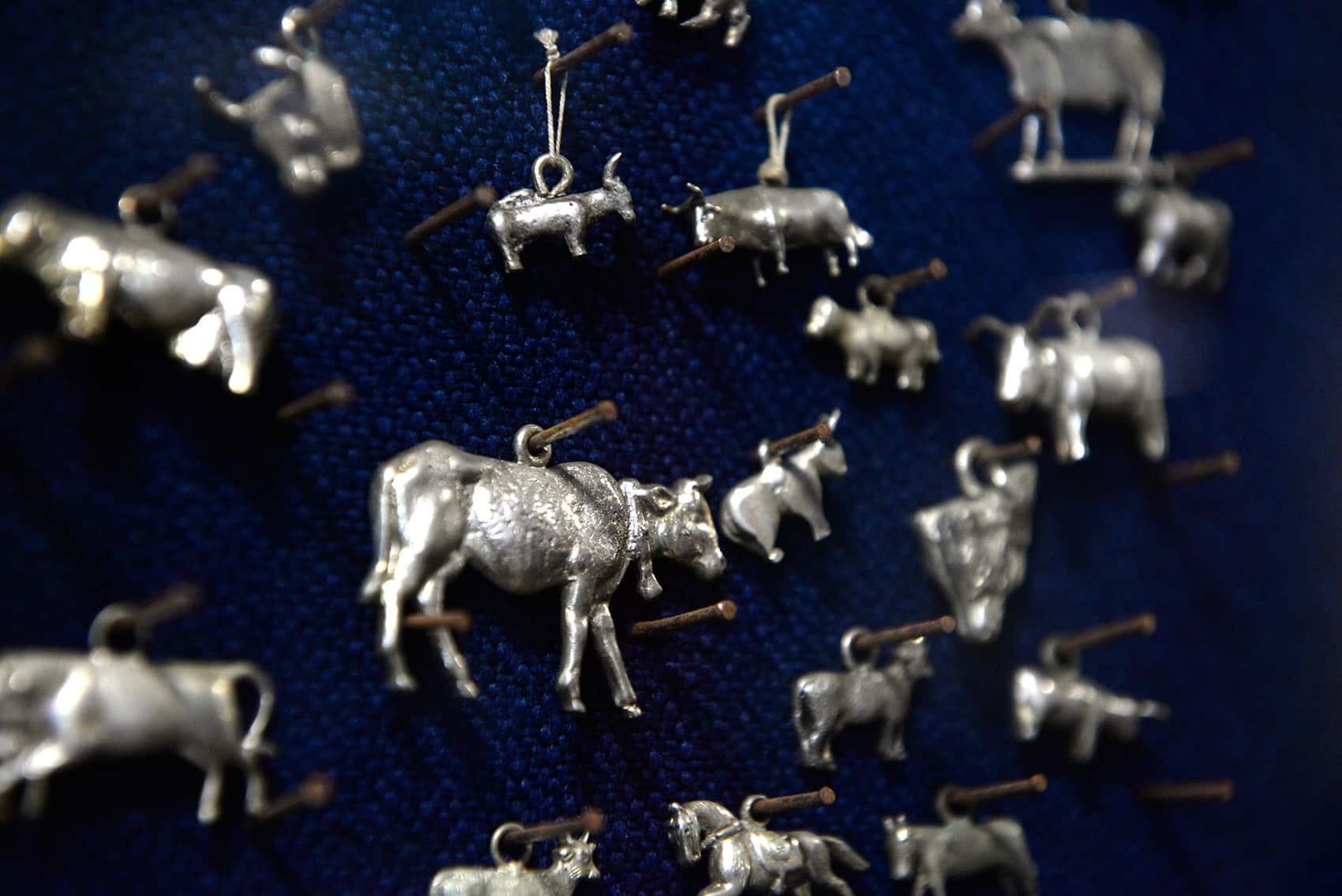
My goal-scoring leg
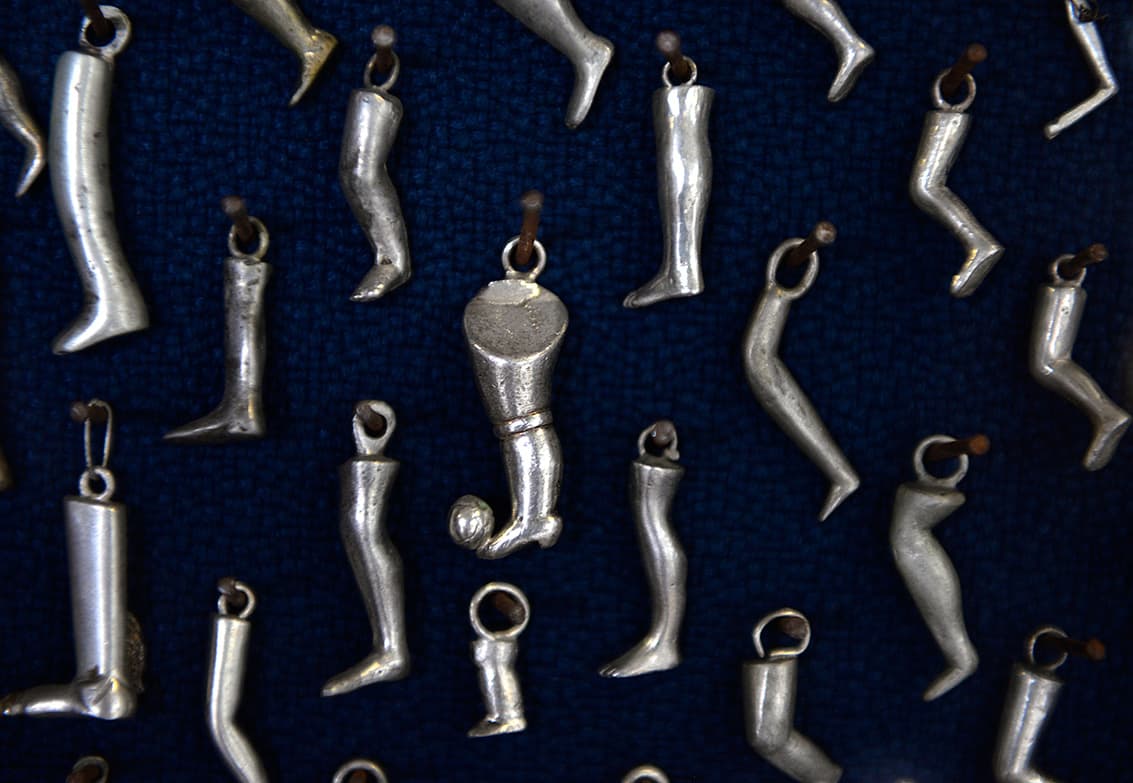
My ear
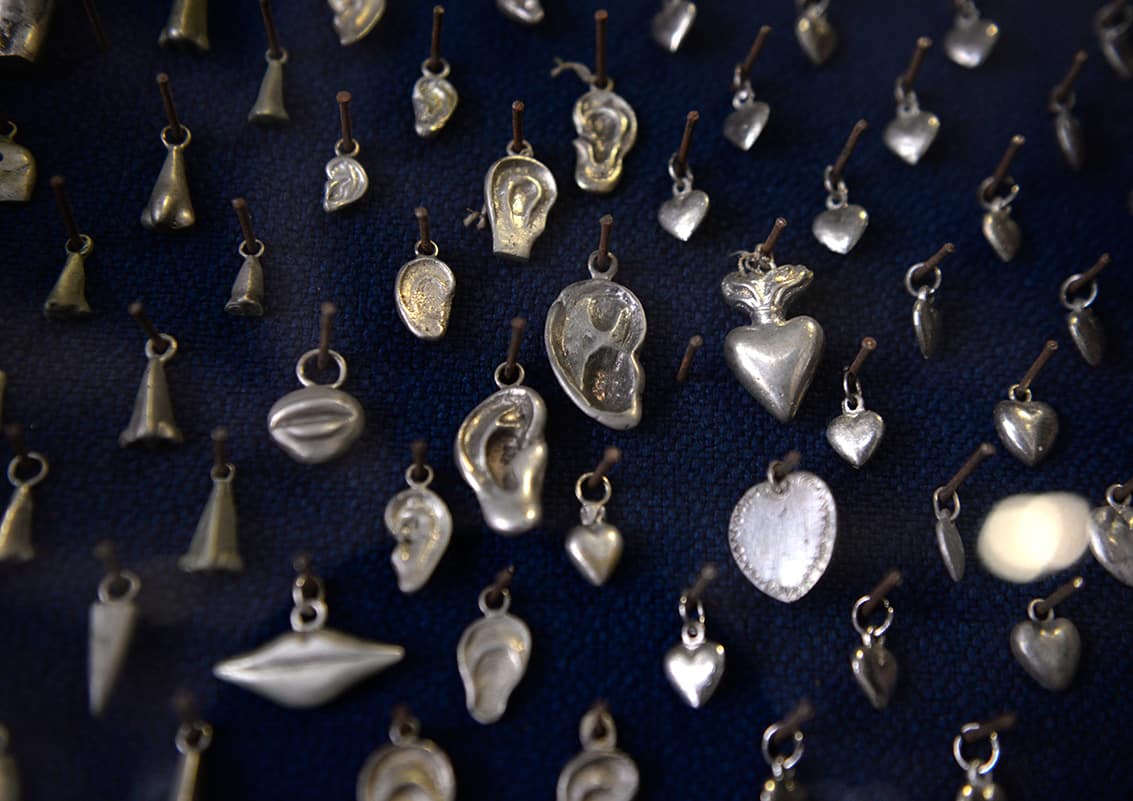
Some body part between my upper thighs and chest
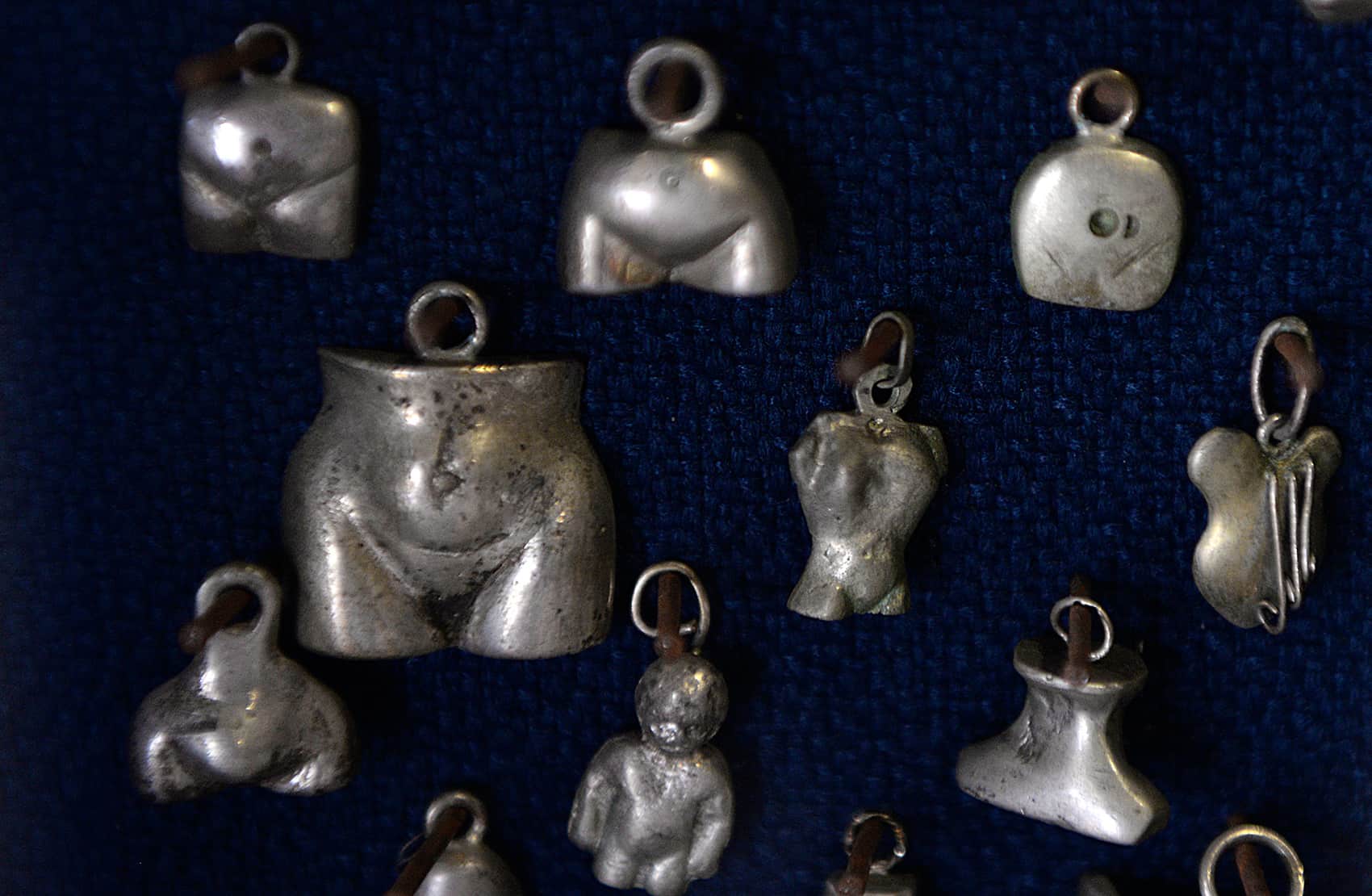
Everything about this person
